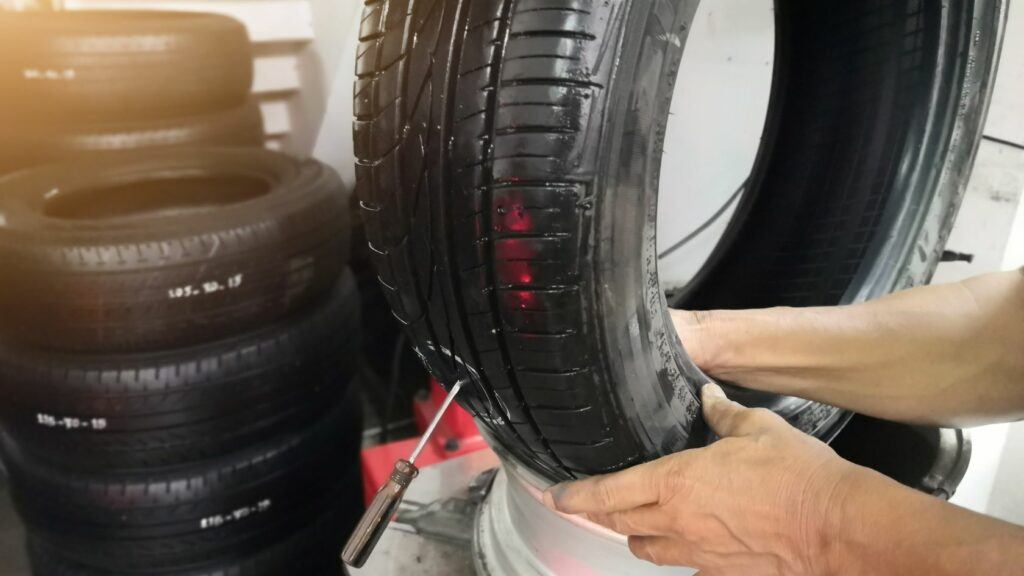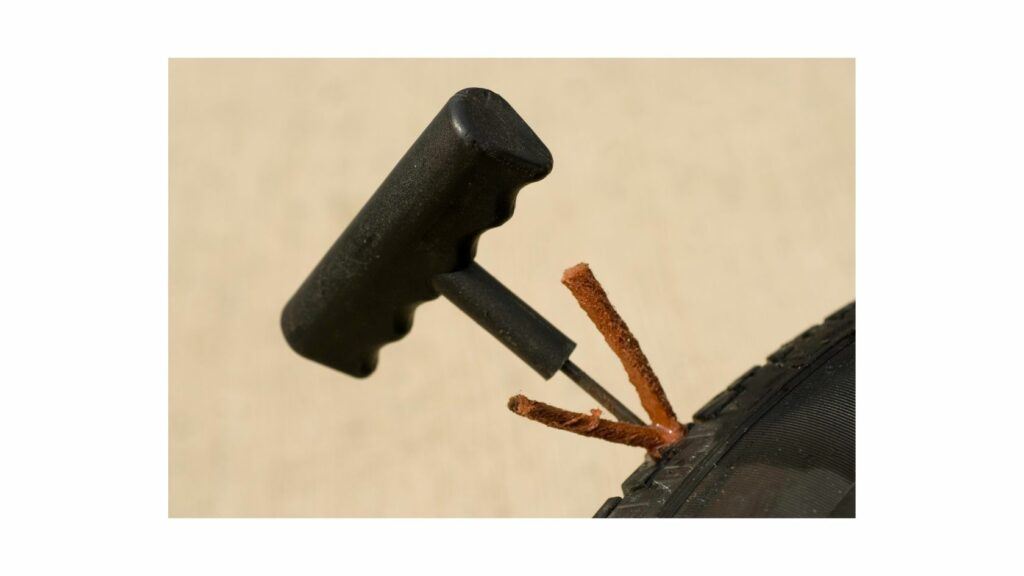
Patching a tire is very common in a puncture or air leakage. But how long can you run on a patched tire? Can a patched tire blow out?
Is it safe to drive with a patched tire? These are some of the questions that need answers before you start playing with the patched tires.
In this post, you will find answers to all the above questions and many others related to patched tires. I will also cover some information about plugged tires and if they are safe to drive with.
Can a patched tire blowout?
By all means yes, a patched tire can blow out. The blow out does not happen immediately or on its own. It is a result of a combination of several factors that lead a patched tire to blow out.
Some of the factors include the age of the tire, size of the patch, and the speed and conditions of the road a patched tire is driven on.
More importantly the quality of the patch and the knowledge and experience of the patch repairer could play the spoilsport.
Whatever the reason, a patched tire needs to be used with caution and care to avoid re-patching and blow outs.
Before we deep dive into the causes, it is important to know…
What is tire patching?
Simply put, tire patching is tire repairing process to make the tires work again. Tire patching is better performed by professional tire repairers as it involves lots of hard work and ethical knowledge of the tire structure.
When the tire is punctured or leaking air through slits/cuts tire patching is performed to address the puncture or seal the gaps.

The patch is applied to the inside of tires including parts related to inner liner, tread walls, etc. The process begins by finding the affected spots and then applying the patch.
The patch consists water-tight sealant or rubber cements that are placed on the affected areas and then covered with an adhesive tape to secure the repair.
Once the patch is completed, tires are filled up with air to check if there are any leakages left out. If nothing is found, tire is fixed to the car for rerun.
Tire patching is one of the cost-effective ways to extend the life of existing tires and avoid replacements.
Tire plugging
Another useful way to temporarily fix the tires is the plugging method. Under the plugging method, small to moderate air leakages or holes can be fixed by plugging rubber material on the outside of tires.
After inserting the rubber plug, the left-out portion is trimmed out to balance the tire surface. Plugging method is another cost-effective way to fix tires.
Difference between patching and plugging of tires
The main difference between patching and plugging is the tire location. Patching is mainly performed inside of tire as a long-lasting solution and plugging is performed on the outside of tires as a temporary fix which further needs thorough inspection by a tire professional.

On the positive side, tire plugging can be performed much quickly and easily compared to tire patching.
On the flip side, both tire patching and plugging cannot be applied on the damages found on the side walls of tires.
Tire plugging is conducive only for small cuts/holes or punctures whereas patching is helpful in countering bigger punctures/air leakages.
Both the methods result in fixing of tires to continue the journey however, tire patching is a much better solution than tire pluggingto avoid blow outs.
Age of the tire
Patching or plugging an aged tire is possible but not fully recommended. In such cases, the condition of tires plays an important role in deciding the fix.
If the tire has reached its maximum age or running limit, temporary fixes may not bring it back to life. Aged tires are prone to damages appearing in tread walls in the form of cracks, bulges, wear and tear.
You can also notice exposed fabrics on the side walls which cannot be fixed under patching or plugging.
Even if the fixing is done without any choice, age old tires can suffer blow outs and it is best to consult a tire technician or replace the tires with new ones asap.
Quality of the patch
Patching is work of an expert. If the patching is faulty the condition of tire may worsen after a few miles drive.
If the tires begin to leak air, and appears bulgy it means the patching was not done correctly.
As mentioned earlier, the process of patching involves removal of tires from the rim, full inspection to detect the faults/leakages, application of patch with some glue cover and refixing the tires to the rim.
If the patcher or tire repairer performs patch on the sidewall of tires or to a puncture that has damaged more than ¼ of the tire it means you have given the job into the wrong hands.
Make sure the technician or patch repairer is well-experienced and trustworthy. More than the local garages/service stations it is better to get the patch done from recognized tire dealers/technicians to get the patching right.
Appropriate patching takes longer and may charge a few more dollars than plugging but the end result is security and durability of tires that keep the blow outs away.
How long can you run on a patched tire?
Assuming all the above factors were taken into consideration while patching and if actual patching work is done correctly, you can run the tire for as long as the patch exists.
For example, a tire expected to run 40000 miles in its lifespan before getting damaged can complete the milestone if properly patched.
As a precautionary measure, you must intend to replace tires that are frequently damaged and patched on the same area repeatedly (more than 3 times to be precise). Such instances make the patch area vulnerable to early wear and tear reducing its lifespan.
Is it safe to drive with patched tire?
Yes, it is absolutely safe to drive with a patched tire provided the patch is not affected by the on-road obstacles.
Perfect patching is completely safe and secure for the driving and tires. As long as you drive within the speed limits and keep the tires well-maintained there is no need to worry about driving with a patched tire.
Can a plugged tire blow out and pose any security risk while driving?
Plugged tires are temporary solution for small punctures/leaks. There is a risk of blow outs if plugging is not done correctly.
Secondly, plugging is performed on the outer walls of tires which means direct contact and fierce friction with the road that can make the plugging weaker.
Plugged tires are prone to blow outs if the tire had internal damages or bigger punctures that should have been covered under patching.
There is a risk of driving with plugged tires and proper inspection and action is recommended from professional technicians.
Final thoughts
Patching and plugging are both temporary fixes to tires. Both have their own advantages and disadvantages.
Patching is more secure and long-lasting than plugging if done correctly by professionals. Similarly, plugging is instrumental in saving time, cost and effort and can be performed by anyone.
Both the processes carry risk of tire blow outs with the causes mentioned in this post. From a precautionary perspective, always keep the tires properly inflated, drive under speed limits, and perform maintenance of tires periodically.
As an alternative, carry a puncture/tire repair kit and tire inflator to avoid getting stuck on the road. Learn the process of fixing punctures, and replacing tires with a spared one to continue your journey.
Rest assured, following the information and tips from this post will help you overcome the unexpected scenarios of tire punctures, and adopting the appropriate process (patching/plugging) to repair them.
